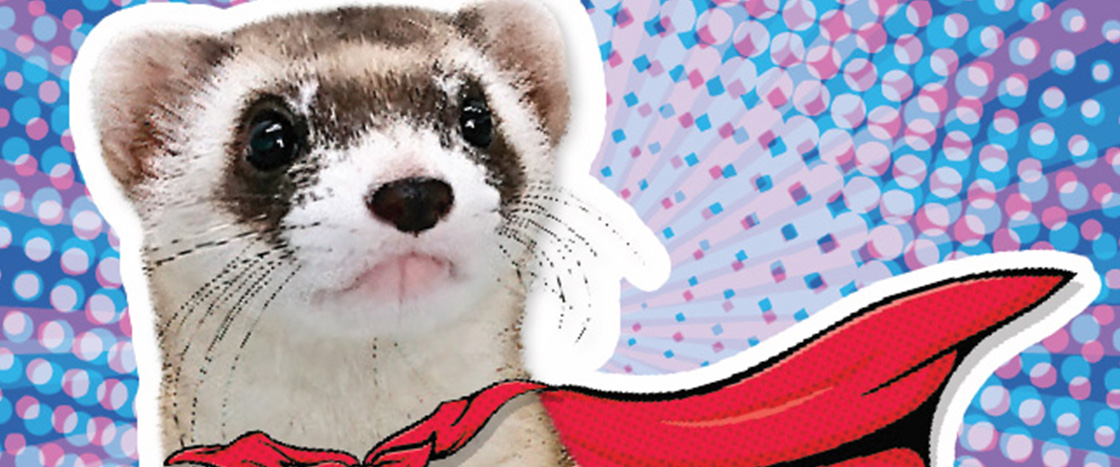With her long body, stubby legs, and brown and white markings, Elizabeth Ann looks like any other black-footed ferret. But she has a secret identity that makes her special: She’s a clone!
A clone is an exact copy of a plant or an animal, similar to an identical twin. Animals that are clones have the exact same DNA. This material determines an organism’s inherited traits, the characteristics that it receives from its parents. DNA is found inside cells, the microscopic units that make up all living things.
Elizabeth Ann is the first clone of an endangered animal native to North America. She has the exact same DNA as a black-footed ferret that died about 30 years ago named Willa. To clone Willa, scientists collected her DNA and combined it with cells from a domestic ferret (see How to Clone a Ferret). Another domestic ferret gave birth to Elizabeth Ann on December 10, 2020.
Scientists bred Elizabeth Ann for an important reason. Wild black-footed ferrets are in danger of dying out. Scientists hoped that if Elizabeth Ann could have healthy offspring, she might be able to help save her species.
Elizabeth Ann looks like any other black-footed ferret. She has a long body and short legs. She’s covered in brown and white markings. But she’s special. She’s a clone!
A clone is an exact copy of a plant or an animal. It’s similar to an identical twin. Animals that are clones have the same DNA. This material controls a creature’s inherited traits. Inherited traits are the features a living thing gets from its parents. DNA is found inside cells. They’re the smallest units of all living things.
Elizabeth Ann is the first clone of an endangered North America animal. She has the exact same DNA as another black-footed ferret. Her name was Willa. She died about 30 years ago. Scientists collected her DNA. They added it to cells from a domestic ferret (see How to Clone a Ferret). Another domestic ferret gave birth to Elizabeth Ann on December 10, 2020.
Scientists bred Elizabeth Ann for an important reason. Wild black-footed ferrets are in danger of dying out. Scientists hoped Elizabeth Ann would have babies. Then she could help save her species.

